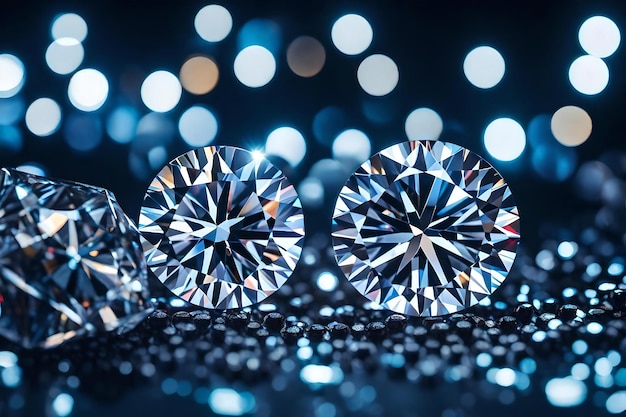In recent years, the conversation surrounding sustainable luxury has gained momentum, particularly in the jewelry industry. One of the key players advocating for ethical practices is the World Wildlife Fund (WWF). The WWF has been instrumental in promoting environmental conservation, and their efforts extend into the realm of ethical sourcing, including lab-grown diamonds. This article explores the intersection of wwF and lab grown diamonds, shedding light on how this innovative approach can positively impact the planet.
Table of Contents
ToggleThe Role of WWF in Promoting Sustainable Practices
The WWF is a global organization dedicated to the conservation of nature and the reduction of the most pressing threats to the diversity of life on Earth. By working with governments, businesses, and communities, WWF aims to create sustainable solutions that benefit both people and the environment. One significant area of focus is the jewelry industry, which often relies on mining practices that can be harmful to ecosystems and local communities. The WWF advocates for sustainable practices in this sector, highlighting the importance of transparency and responsible sourcing.
By aligning with organizations like WWF, jewelers can ensure that their practices contribute to the conservation of biodiversity and minimize their ecological footprint. Lab-grown diamonds are an excellent example of a sustainable alternative that aligns with WWF’s goals. These diamonds are created in controlled environments, reducing the need for mining and the associated environmental degradation. As consumers become more aware of their purchasing choices, WWF’s influence on promoting lab-grown diamonds is becoming increasingly significant.
Lab Grown Diamonds: A Sustainable Alternative
Lab-grown diamonds, also known as synthetic or cultured diamonds, are created using advanced technological processes that replicate the natural conditions under which diamonds form in the Earth. These diamonds possess the same physical, chemical, and optical properties as their mined counterparts, making them a legitimate alternative for consumers seeking ethical options. The WWF supports the use of lab diamonds as a sustainable choice, as they require significantly less energy and resources to produce compared to traditional diamond mining.
The environmental benefits of lab-grown diamonds are substantial. Traditional diamond mining often results in habitat destruction, soil erosion, and water pollution. In contrast, lab-grown diamonds eliminate these environmental concerns, offering a responsible choice for consumers who prioritize sustainability. The WWF emphasizes that by choosing lab-grown diamonds, consumers can help protect wildlife and promote conservation efforts, aligning their purchases with their values.
The Impact of Consumer Choices on Conservation
Consumer behavior plays a critical role in shaping industries and influencing corporate practices. The WWF encourages consumers to make informed decisions, highlighting the impact of their choices on the environment. By opting for lab-grown diamonds, consumers can actively contribute to the reduction of mining-related harm to ecosystems and communities.
Moreover, the WWF’s educational initiatives aim to raise awareness about the environmental and social implications of diamond sourcing. As consumers become more educated about the origins of their jewelry, they are increasingly inclined to choose ethically sourced options. This shift in consumer preference is vital for driving change within the jewelry industry, pushing more brands to adopt sustainable practices. The alignment of WWF’s conservation efforts with the growing popularity of lab-grown diamonds illustrates the potential for positive change in the industry.
The Future of Lab Grown Diamonds and WWF Collaboration
Looking ahead, the collaboration between WWF and the lab-grown diamond industry has the potential to drive significant advancements in sustainable practices. As technology continues to evolve, the production of lab-grown diamonds may become even more efficient and environmentally friendly. WWF’s involvement in this sector can help establish best practices and standards for the ethical production of lab-grown diamonds, ensuring that the industry grows responsibly.
Additionally, WWF can play a crucial role in promoting lab-grown diamonds as a viable alternative to mined diamonds in the luxury market. By working with jewelers and manufacturers, WWF can help create awareness about the benefits of lab-grown diamonds and their positive impact on the environment. This partnership can also foster innovation in the industry, encouraging the development of new technologies that further reduce the environmental footprint of diamond production.
Conclusion: The Importance of Ethical Choices
In conclusion, the relationship between WWF and lab-grown diamonds highlights the importance of making ethical choices in the jewelry industry. As consumers become more aware of the impact of their purchases, the demand for sustainable options is on the rise. Lab-grown diamonds represent a significant step forward in promoting responsible sourcing and environmental conservation.
By supporting organizations like WWF and choosing lab-grown diamonds, consumers can contribute to the protection of wildlife and the preservation of natural resources. This shift not only benefits the environment but also fosters a more sustainable future for the jewelry industry. As we continue to navigate the complexities of consumerism and conservation, the collaboration between WWF and the lab-grown diamond industry serves as a beacon of hope for a more ethical and sustainable world.





